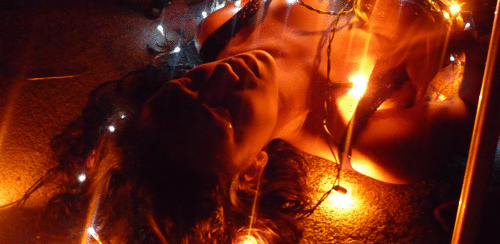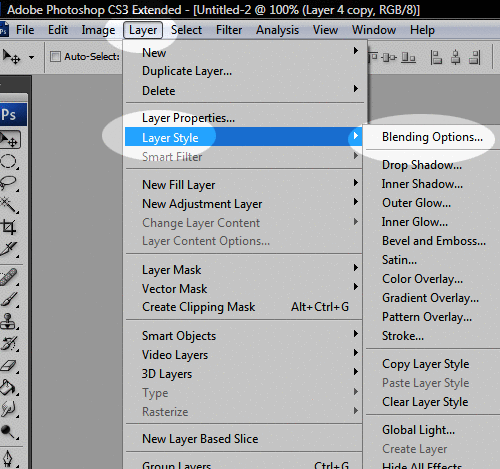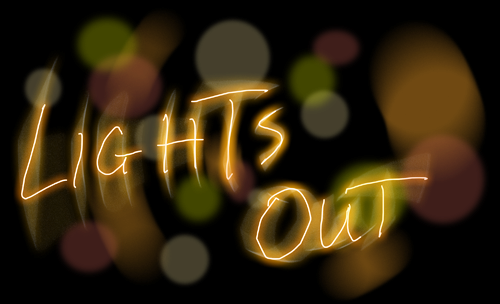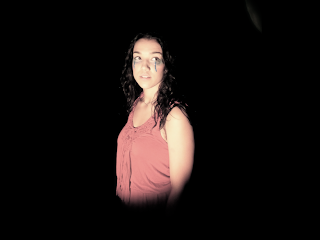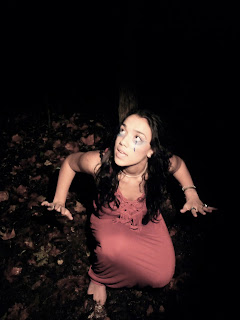 |
| Yesterday we had our first lesson since finishing the music video production and have now moved on to looking at the ancillary products we will be producing - a digipak and magazine advertisement. However, for this lesson we primarily looked at digipaks (as this is what we will be creating first) discussing the roles they play in terms of the music industry today. |
The first thing we covered was what a digipak actually is, which I went over in
this post as I'm quite familiar with them already (I own several). Nonetheless, they are available in either four, six or eight panels which fold in on themselves, usually to the size of a regular jewel case album. Because of this, they allow more information and graphics related to the artist to be included and so the digipak is marketed towards fans that want something extra with their music. Ultimately, it is a way for the music industry to add value to an album and sell it for a slightly more expensive price than your average album. It also helps combat music piracy because, whilst a fan could illegally download the tracks from the album, they wouldn't be able to get the physical extras that come with the digipak. Whilst I think it's an interesting approach, I don't really see this as an effective way to entice fans on a wide scale to turn to buying music, especially with the new generation of young music fans that have only ever obtained music illegally. Nonetheless, I do find myself drawn to digipaks more than regular jewel case CDs, especially when they contain bonus content such as extra tracks or a DVD, so it must be working on some kind of scale.
 |
| Example of a print advert explicitly promoting a 'limited edition digipak' version of an album, which I found and scanned from a copy of Q Magazine. It also mentions all the singles that have been released from the album, which the audience may be familiar with, as well as bonus DVD features, the latter of which aims to get the consumer to invest in the digipak, as they probably won't be able to obtain these bonuses illegally. |
Moving on, we looked at the features of a digipak which we will need to incorporate into our own designs, and their relation to the magazine advert. The main features that will definitely need to be included are the name of the artist, name of album, tracklist on the back + production information (e.g. copyright disclaimer, label, etc.) There are also a number of other things that could be included which are not typical of every digipak, but can be typical of a certain genre or target audience. This can include 'behind the scenes' photos (from a video shoot, live gig, etc.), thank you messages, lyric snippets and 'making of'' information. In addition, the colour scheme of and fonts used on the digipak must be thought about carefully, especially as these must tie in with the magazine advertisement. This is because there must be a recurring visual link between the ancillary products, which can be reinforced further by featuring similar or the same images from the digipak on the advertisement.

But what is it about album/album covers, and more precisely digipaks, that makes them so popular? As a class, we raised several points regarding this. Artist image is a major one, as it helps consumers to be able to identify the artist that is portrayed on the artwork (unless they are of a genre where the artist is not usually shown, e.g. dance music). This in turn means that an artist could play with their persona, whether expressing a different one to who they are or to illustrate their personality. A good example that we discussed was
Rihanna, who for each of her album eras has adapted a unique image and style. The release of her fifth studio album,
Loud, cemented her status as a style icon with her signature red hair appearing on her album and single covers, as well as her music videos, and as a result being adopted by many. A simple Google search for "rihanna red hair" yields results such as
"Get Rihanna's red hair" and "
Does anyone know what shade of red Rihanna's hair is?", illustrating the influence she has had on pop culture with something as trivial as hair colour.
Rihanna is just one of many artists who have made the most of their opportunity to demonstrate their style on their album artwork and in turn set a trend.
Ancillary products as a whole are important for an artist and the music industry as without them, how else would the public hear about new music? By putting money into producing these products and advertisements, they are able to target a wide but also specific album purchasing audience. It also serves in trying to persuade more casual fans to part with their cash for a digipak by playing on their love of music, i.e. putting it across that if you are a serious fan of an artist's music then you should buy a copy of their digipak to add to your collection. All of this in turn leads back to the industry bringing in profit by branching out into a variety of media.
